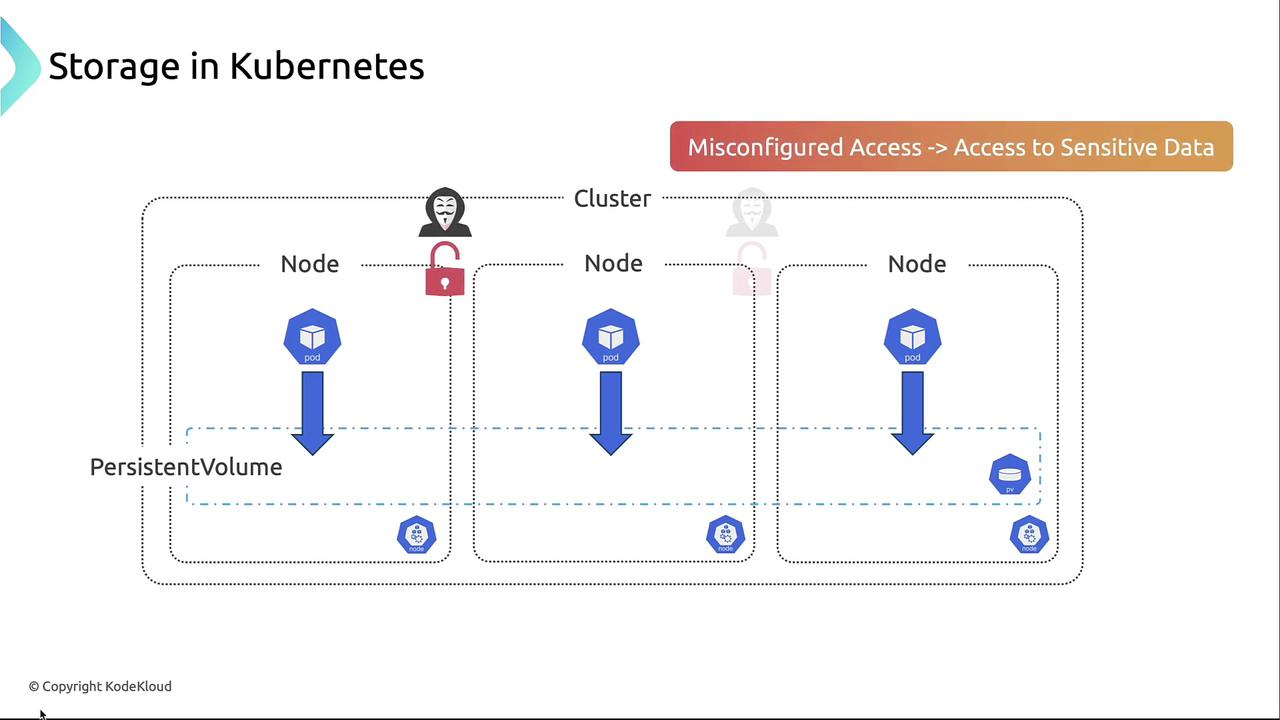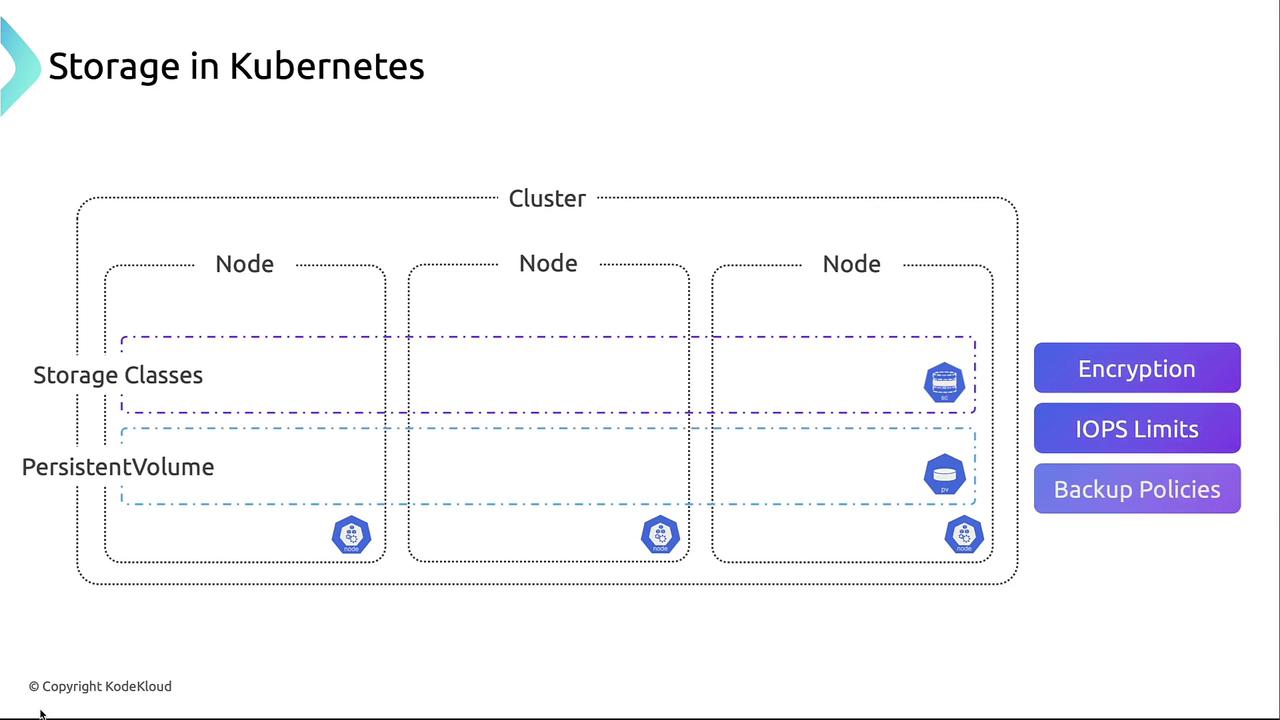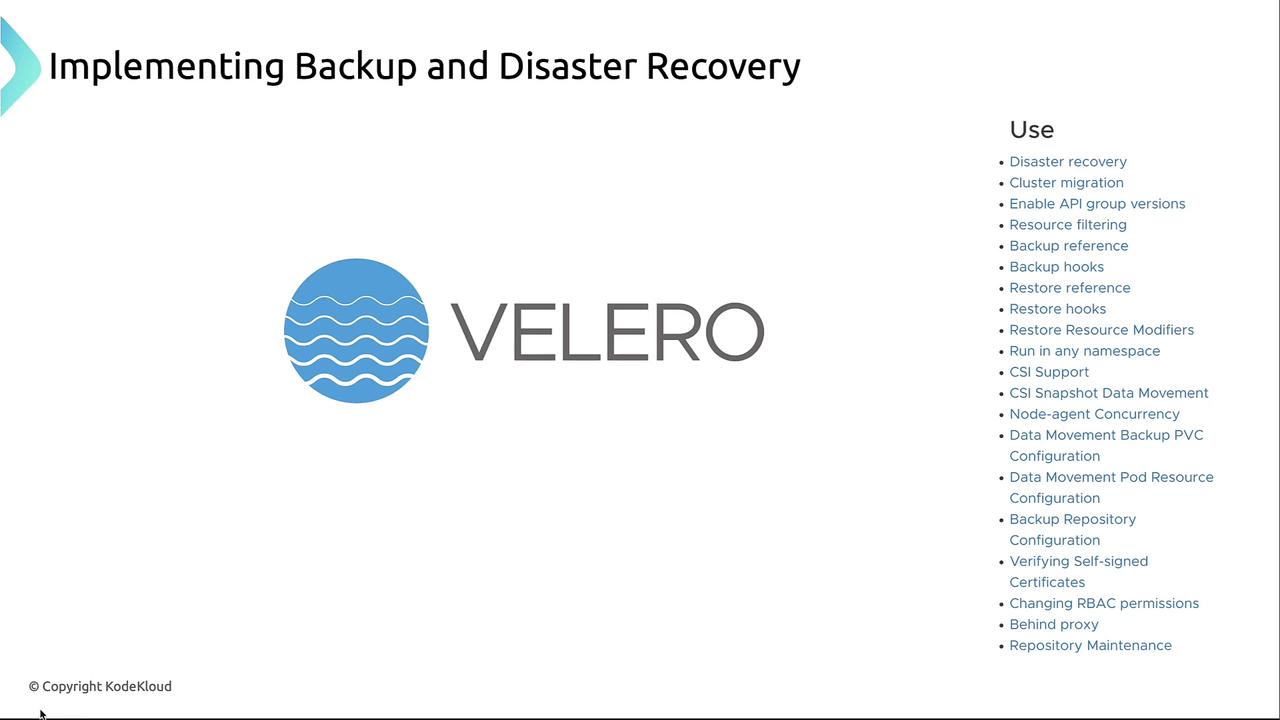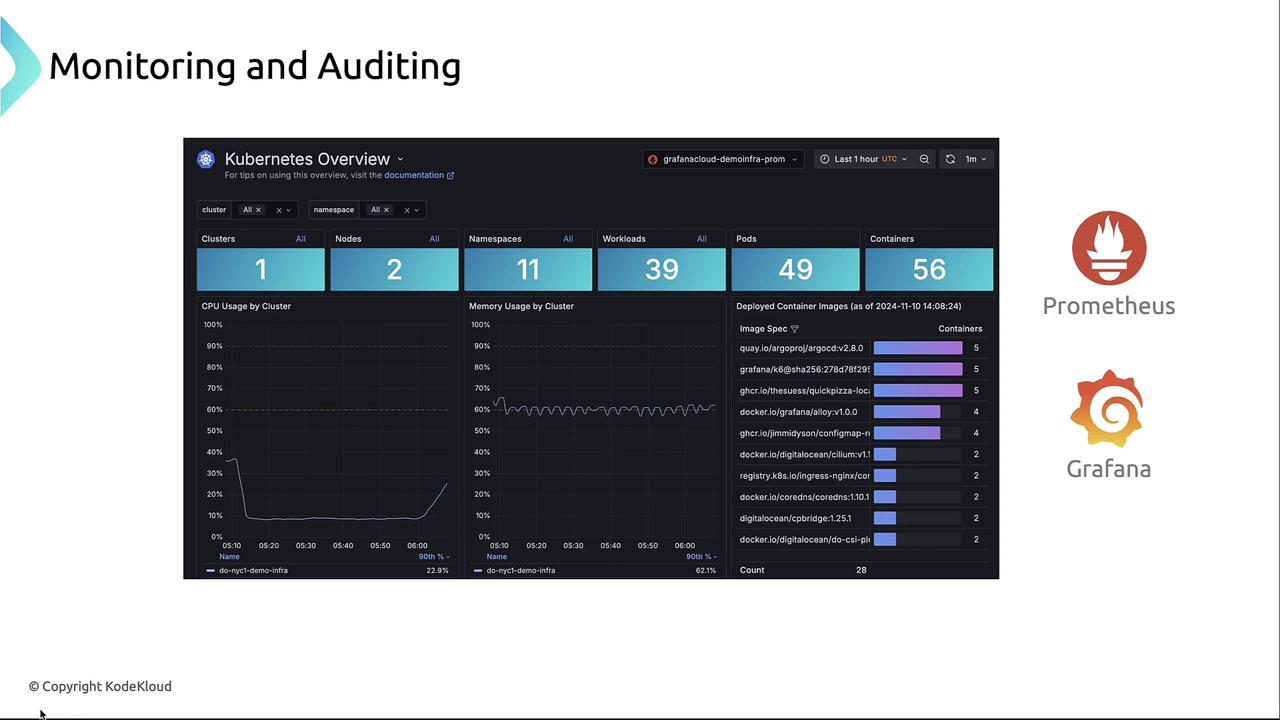Kubernetes and Cloud Native Security Associate (KCSA)
Kubernetes Cluster Component Security
Storage
Securing storage is critical for maintaining data integrity, confidentiality, and availability in your Kubernetes clusters. Pods access storage through Persistent Volumes (PVs) and Persistent Volume Claims (PVCs). Misconfigurations can lead to unauthorized data exposure, interception of unencrypted traffic, or even permanent data loss.

Warning
Unencrypted or improperly scoped storage access can allow attackers to read, modify, or destroy sensitive data. Always review your storage configurations and access policies.
Encrypting Data at Rest and in Transit
Encrypting both disk data and network traffic prevents unauthorized access and eavesdropping. Kubernetes natively supports etcd encryption, and most cloud providers offer disk-level encryption:
![]()
| Provider | Encryption Feature | Reference |
|---|---|---|
| AWS EBS | Customer-managed keys for EBS volumes | https://aws.amazon.com/ebs |
| Azure Disk Storage | Server-side encryption with platform or customer-managed keys | https://azure.microsoft.com/services/managed-disks/ |
| Google Cloud Persistent Disk | CMEK/Customer-supplied encryption keys | https://cloud.google.com/persistent-disk |
To enable encryption on AWS EBS via a custom StorageClass:
apiVersion: storage.k8s.io/v1
kind: StorageClass
metadata:
name: encrypted-ebs
provisioner: kubernetes.io/aws-ebs
parameters:
type: gp2
encrypted: "true"
Note
Ensure your cloud IAM policies grant permissions to use the specified encryption keys.
Role-Based Access Control (RBAC) for Storage
Restrict access to StorageClasses, PVs, and PVCs using Kubernetes RBAC. Define granular roles and bind them to users or service accounts.
apiVersion: rbac.authorization.k8s.io/v1
kind: Role
metadata:
namespace: default
name: pvc-reader
rules:
apiGroups: [""]
resources: ["persistentvolumeclaims"]
verbs: ["get", "list"]
apiVersion: rbac.authorization.k8s.io/v1
kind: RoleBinding
metadata:
name: read-pvc-binding
namespace: default
subjects:
- kind: User
name: jane
apiGroup: rbac.authorization.k8s.io
roleRef:
kind: Role
name: pvc-reader
apiGroup: rbac.authorization.k8s.io
By scoping roles to namespaces and specific verbs (get, list, create, delete), you minimize the blast radius of compromised credentials.
StorageClasses and Policy Enforcement
StorageClasses let you standardize storage parameters—such as encryption, IOPS, and backup policies—across your cluster.

apiVersion: storage.k8s.io/v1
kind: StorageClass
metadata:
name: secure-storage
provisioner: kubernetes.io/aws-ebs
parameters:
type: gp3
encrypted: "true"
iops: "3000"
Key benefits:
- Decouple storage parameters from application manifests
- Enforce organizational policies (encryption, throughput, retention)
- Simplify provisioning for developers
Backup and Disaster Recovery
Implement automated backups and cross-cluster replication to guard against data loss, corruption, and ransomware.

| Tool | Description | Link |
|---|---|---|
| Velero | Open source backup, restore, and disaster recovery | https://velero.io |
| Portworx | Enterprise-grade storage management and DR | https://portworx.com |
| OpenEBS | Containerized storage with snapshot and clone features | https://openebs.io |
| Kasten | Policy-driven backup and mobility for Kubernetes volumes | https://www.kasten.io |
Monitoring Storage Health and Security
Track storage metrics and access patterns to detect anomalies early. Use Prometheus for data collection and Grafana for visualization.

Important metrics:
- Volume latency and throughput
- PVC capacity versus usage
- I/O error rates
- Unauthorized mount or delete attempts
Integrate alerting rules to notify on threshold breaches or suspicious activity.
Summary

In this lesson, you learned how to:
- Encrypt data at rest and in transit
- Enforce RBAC for storage resources
- Standardize storage parameters with StorageClasses
- Automate backups and disaster recovery
- Monitor storage metrics and access patterns
For deeper dives, see the Kubernetes Storage Concepts and the Kubernetes Security Best Practices.
Watch Video
Watch video content